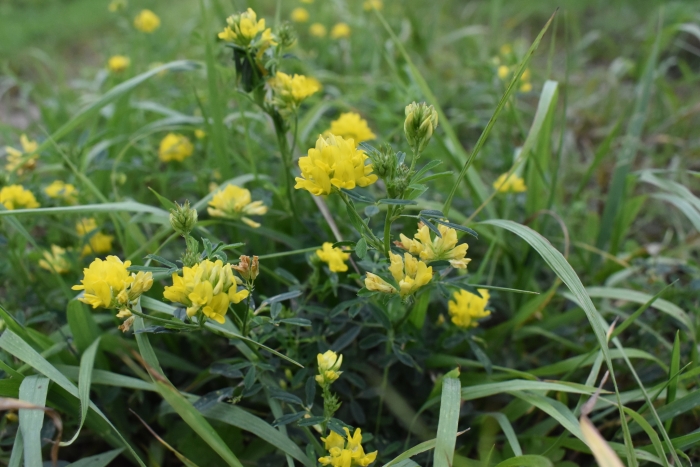Yellow Lucerne
(Medicago falcata)
Yellow Lucerne (Medicago falcata)
/
/

Repina Tatyana
CC BY 4.0
Image By:
Repina Tatyana
Recorded By:
Copyright:
CC BY 4.0
Copyright Notice:
Photo by: Repina Tatyana | License Type: CC BY 4.0 | License URL: http://creativecommons.org/licenses/by/4.0/ | Rights Holder: Repina Tatyana | Publisher: iNaturalist | Date Created: 2020-07-30T14:17:32-07:00 |
























Estimated Native Range
Summary
Medicago falcata, commonly known as yellow lucerne or sickle alfalfa, is a perennial herb native to a wide range of habitats including grasslands, meadows, open woodlands, and roadsides across much of Europe and Asia. It typically grows to a height of 0.3 to 0.6 meters and spreads to form low clumps. This species is characterized by its sickle-shaped pods and bright yellow flowers that bloom from June to August, providing a modest display. The plant’s deep root system allows it to access water from deeper soil layers, making it drought-resistant.
Yellow lucerne is valued for its ability to improve soil fertility through its symbiotic relationship with the nitrogen-fixing bacterium Sinorhizobium meliloti. It is used in agriculture as a forage crop for livestock and as a green manure to enrich agricultural soils. In gardens, it can be used as a ground cover to stabilize soil and prevent erosion. It thrives in full sun to partial shade and prefers well-drained soils. While generally low-maintenance, it can become weedy and potentially invasive outside its native range, so caution is advised when planting it in areas where it is not native.CC BY-SA 4.0
Yellow lucerne is valued for its ability to improve soil fertility through its symbiotic relationship with the nitrogen-fixing bacterium Sinorhizobium meliloti. It is used in agriculture as a forage crop for livestock and as a green manure to enrich agricultural soils. In gardens, it can be used as a ground cover to stabilize soil and prevent erosion. It thrives in full sun to partial shade and prefers well-drained soils. While generally low-maintenance, it can become weedy and potentially invasive outside its native range, so caution is advised when planting it in areas where it is not native.CC BY-SA 4.0
Plant Description
- Plant Type: Herb
- Height: 1-2 feet
- Width: 1-3 feet
- Growth Rate: Moderate
- Flower Color: Yellow
- Flowering Season: Summer
- Leaf Retention: Deciduous
Growth Requirements
- Sun: Full Sun
- Water: Low
- Drainage: Medium, Fast
Common Uses
Drought Tolerant, Erosion Control, Low Maintenance
Natural Habitat
Native to grasslands, meadows, open woodlands, and roadsides across much of Europe and Asia
Other Names
Common Names: Yellow Lucerne, Yellow Alfalfa
Scientific Names: , Medicago falcata, Medica falcata, Medicago aurantiaca, Medicago falcata f. arenaria, Medicago falcata subsp. glandulosa, Medicago falcata subsp. glandulosa, 1965, Medicago falcata var. angustissima, Medicago falcata var. falcata, Medicago falcata var. romanica
GBIF Accepted Name: